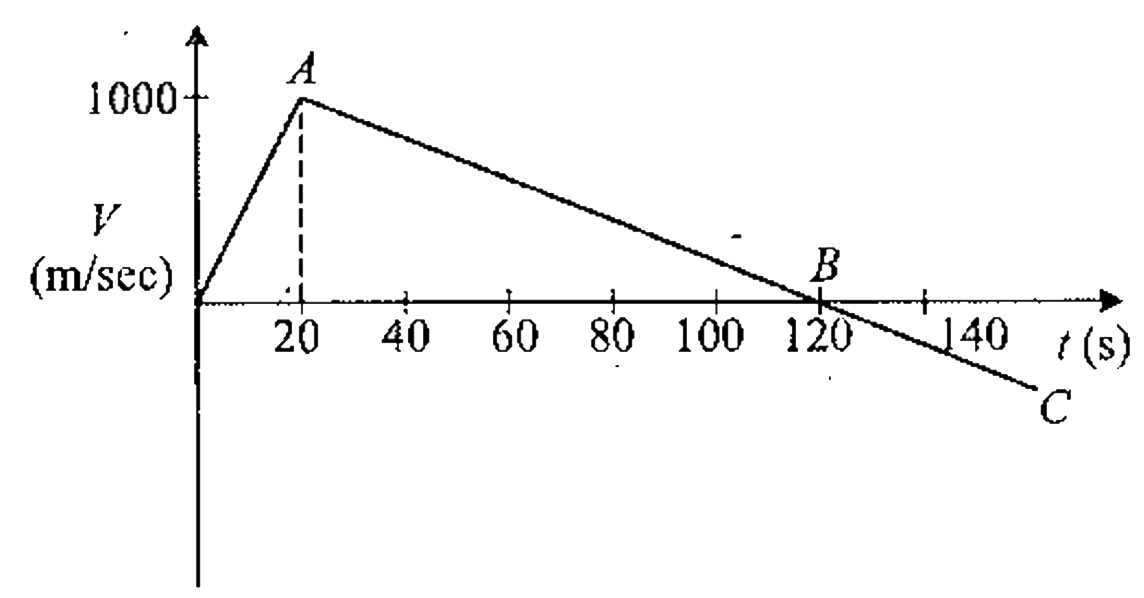A particle is projected vertically upward with with velocity √23GMR from the surface of Earth. The height attained by it is (G, M, R have usual meanings)
3R
R2
2R
R3
The correct Answer is:B
To solve the problem of finding the height attained by a particle projected vertically upward with a specific velocity from the surface of the Earth, we can use the principle of conservation of energy. Here’s a step-by-step solution:
1. Identify Given Values:
- Initial velocity v=√23GMR
- Mass of the Earth M
- Radius of the Earth R
- Gravitational constant G
2. Apply Conservation of Energy:
The total mechanical energy at the surface of the Earth must equal the total mechanical energy at the maximum height h reached by the particle.
Total Energy at Surface=Total Energy at Height h
This can be expressed as:
K.E. at surface+P.E. at surface=K.E. at height h+P.E. at height h
3. Calculate Kinetic and Potential Energy:
- At the surface:
- Kinetic Energy (K.E.) = 12mv2
- Potential Energy (P.E.) = −GMmR
- At height h:
- K.E. = 0 (at the maximum height, the velocity is 0)
- P.E. = −GMmR+h
4. Set Up the Equation:
12mv2−GMmR=0−GMmR+h
5. Substitute the Initial Velocity:
Substitute v into the equation:
12m(√23GMR)2−GMmR=−GMmR+h
Simplifying the left side:
12m⋅23⋅GMR−GMmR=−GMmR+h
GMm3R−GMmR=−GMmR+h
6. Combine Terms:
GMm3R−3GMm3R=−GMmR+h
−2GMm3R=−GMmR+h
7. Cancel GMm:
Since GMm is common on both sides, we can cancel it out:
23R=1R+h
8. Cross-Multiply:
2(R+h)=3R
2R+2h=3R
9. Solve for h:
2h=3R−2R
2h=R
h=R2
Final Answer:
The height attained by the particle is h=R2.
- Initial velocity v=√23GMR
- Mass of the Earth M
- Radius of the Earth R
- Gravitational constant G
The total mechanical energy at the surface of the Earth must equal the total mechanical energy at the maximum height h reached by the particle.
K.E. at surface+P.E. at surface=K.E. at height h+P.E. at height h
- At the surface:
- Kinetic Energy (K.E.) = 12mv2
- Potential Energy (P.E.) = −GMmR
- K.E. = 0 (at the maximum height, the velocity is 0)
- P.E. = −GMmR+h
12mv2−GMmR=0−GMmR+h
Substitute v into the equation:
12m(√23GMR)2−GMmR=−GMmR+h
12m⋅23⋅GMR−GMmR=−GMmR+h
GMm3R−GMmR=−GMmR+h
GMm3R−3GMm3R=−GMmR+h
−2GMm3R=−GMmR+h
Since GMm is common on both sides, we can cancel it out:
23R=1R+h
2(R+h)=3R
2R+2h=3R
2h=3R−2R
2h=R
h=R2
The height attained by the particle is h=R2.
Topper's Solved these Questions
- GRAVITATION BOOK - AAKASH INSTITUTE ENGLISHCHAPTER - GRAVITATION EXERCISE - ASSIGNMENT SECTION -C (Objective Type Questions (More than one option are correct))
12 Videos
- GRAVITATION BOOK - AAKASH INSTITUTE ENGLISHCHAPTER - GRAVITATION EXERCISE - ASSIGNMENT SECTION -D (Linked Comprehension Type Questions)
13 Videos
- GRAVITATION BOOK - AAKASH INSTITUTE ENGLISHCHAPTER - GRAVITATION EXERCISE - ASSIGNMENT SECTION -A (Objective Type Questions (one option is correct))
50 Videos
- ELECTROSTATIC POTENTIAL AND CAPACITANCE BOOK - AAKASH INSTITUTE ENGLISHCHAPTER - ELECTROSTATIC POTENTIAL AND CAPACITANCE EXERCISE - ASSIGNMENT SECTION - D
9 Videos
- KINETIC THEORYBOOK - AAKASH INSTITUTE ENGLISHCHAPTER - KINETIC THEORYEXERCISE - EXERCISE (ASSIGNMENT) SECTION - D Assertion - Reason Type Questions
10 Videos
Similar Questions
A body is projected vertically upwards with speed √gRe from the surface of earth. What is the maximum height attained by the body ? [Re is the radius of earth, g is acceleration due to gravity]
View SolutionA rocket is projected vertically upwards and its time velocity graph is shown in the figure-1.115. The maximum height attained by the rocket is :

View SolutionA particle is projected vertically upward with velocity u from a point A, when it returns to the point of projection .
View SolutionA body is projected vertically upwards with a speed of √GMR ( M is mass and R is radius of earth ) . The body will attain a height of
View SolutionA particle is projected vertically with speed V from the surface of the earth . Maximum height attained by the particle , in term of the radius of earth R,V and g is ( V < escape velocity , g is the acceleration due to gravity on the surface of the earth )
View SolutionA tunnel is dug inside the earth across one of its diameters. Radius of earth is R and its mass is M. A particle is projected inside the tunnel with velocity √2GMR from one of its ends then maximum velocity attained by the particle in the subsequent motion is (assuming tunnel to be frictionless)
View SolutionA particle is projected vertically upwards from ground with velocity 10 m/s. Find the time taken by it to reach at the highest point ?
View SolutionA tunnel is dug inside the earth across one of its diameters. Radius of earth is R and its mass is M. A particle is projected inside the tunnel with velocity √2GMR from one of its ends then maximum velocit attained by the particle in the subsequent motion is √nGMR (assuming tunnel to be frictionless). Find n
View SolutionA particle is projected vertically upwards with a velocity √gR, where R denotes the radius of the earth and g the acceleration due to gravity on the surface of the earth. Then the maximum height ascended by the particle is
View SolutionA particle is projected vertically upwards with a velocity √gR, where R denotes the radius of the earth and g the acceleration due to gravity on the surface of the earth. Then the maximum height ascended by the particle is
View Solution
